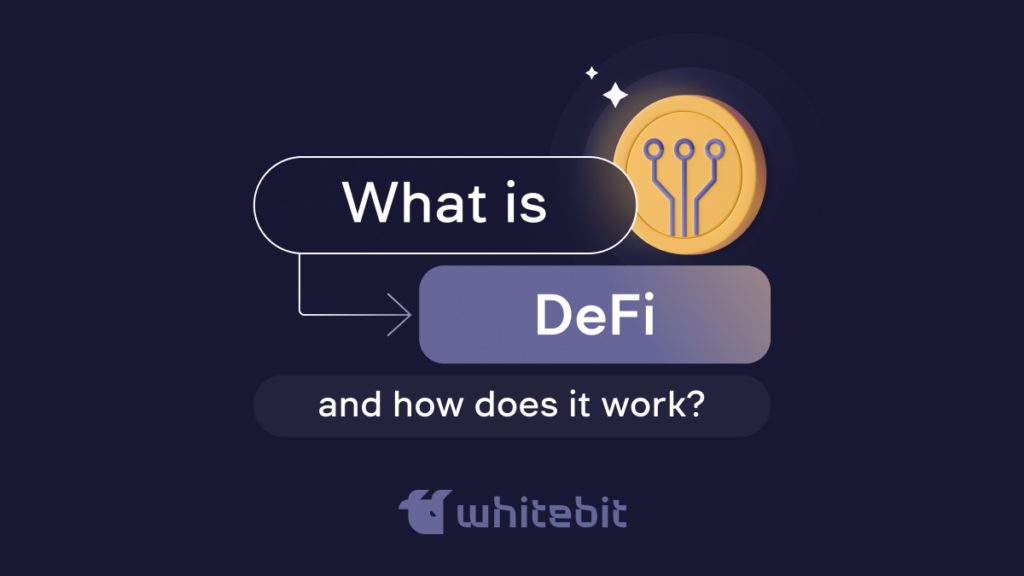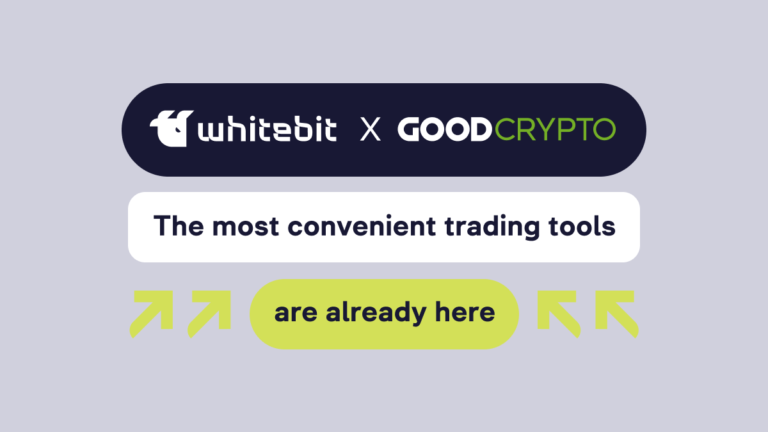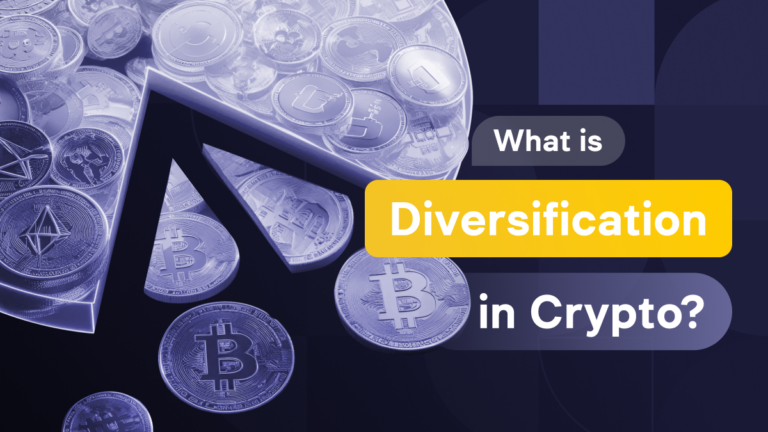What is DeFi and how does it work?

Content
Main:
- Decentralized finance (DeFi) is an ecosystem of publicly available decentralized financial services based on public blockchains.
- Decentralized finance (DeFi) allows the use of financial services such as borrowing, lending, and trading without the need to rely on centralized organizations.
- DeFi is the basis for dApps, stablecoins, DEX, decentralized insurance and lending.
A bit of a backstory. The global financial crisis hit in 2008, a complex phenomenon with a contradictory range of causes. The consequences were also uncertain: on the one hand, governments provided guarantees for bank deposits, which increased depositors’ confidence and stopped massive withdrawals, while on the other hand, it contributed to even greater regulation of the financial sector by the state. However, one thing was clear: the crisis exposed the shortcomings of the traditional financial system and emphasized the need to improve it.
Thus, the imperfection of the payment and clearing system, the accessibility and lack of centralized control, as well as the rapid development of blockchain technology and the Internet formed the basis of the idea of DeFi (decentralized finance).
Let’s take a closer look at this technology.
What Is Decentralized Finance (DeFi)?
The essence of decentralized finance is hidden in the term, and it is the lack of a centralized government.
DeFi is a financial technology based on secure distributed ledgers, an environment that enables the use of financial services without the need to rely on centralized organizations. In the DeFi system, financial services are provided through decentralized applications (dApps), most of which are deployed on the Ethereum platform.
DeFi opposes the centralized financial system by providing people with the ability to peer-to-peer exchange.
People store money in a secure digital wallet and can transfer funds in a matter of minutes. Also, unlike the traditional system, anyone with Internet access can use DeFi.
How does DeFi work?
Every time you make a transaction from a conventional bank account, it is recorded in a private ledger — your banking history — that is owned and managed by a large financial institution. Whereas decentralized finance uses blockchain technology, a distributed and secure database or ledger.
In a blockchain, transactions are recorded in the form of blocks and then verified by other users. If these versifiers confirm the transaction, the block is closed and encrypted, and afterward another block is created with information about the previous block.
Blocks are “linked” to each other using the information in each subsequent block, which gives it its name. The information in previous blocks cannot be changed without affecting subsequent blocks, so there is no way to change the blockchain. This concept, along with other security protocols, guarantees the reliability of the blockchain.
DeFi use cases
Here is a brief overview of some of the most common examples of DeFi technology:
dApps
Most DeFi apps are currently built on the Ethereum blockchain, a global open source platform for decentralized applications. With Ethereum, software developers can write smart contracts to control assets according to a given algorithm from anywhere in the world.
At first glance, dApps are ordinary web and mobile applications, except that they interact with the blockchain in different ways. Some of these decentralized finance applications require ETH to work.
Stablecoins
Stablecoins are one of the elements of DeFi. These are cryptocurrency DeFi tokens used in various DeFi protocols and applications to ensure stability and reduce volatility, which is a characteristic feature of cryptocurrencies.
The basic idea behind stablecoins is to relate their value to a specific asset or reserve, such as fiat currency, gold, or other cryptocurrencies. This allows stablecoins to maintain a stable exchange rate and makes them similar to traditional currencies.
The most popular stablecoins:
- Tether (USDT) is a centralized stablecoin backed by the national currency at a $1:1 USDT ratio.
- USD Coin (USDC) is a centralized stablecoin, the second largest in terms of capitalization after Tether (USDT). It is collateralized by reserves of debt securities and cash held on the balance sheet of regulated financial organizations in the United States at a ratio of $1:1 USDC.
- Binance USD (BUSD) is a centralized stablecoin backed by reserves in dollars at a ratio of $1:1 BUSD.
- Dai (DAI) is a decentralized stablecoin that operates on the Ethereum blockchain. It is created by pledging the cryptocurrency Ethereum (ETH) using smart contracts. $1:1 DAI, but its value may vary slightly depending on supply and demand.
Lending and borrowing
The traditional financial system is based on lending and borrowing services. However, the conditions of the traditional lending and borrowing system are very strict: restrictive financing criteria, geographical or legal restrictions on access to banks, and high barriers to obtaining credit. In fact, only wealthy individuals can enjoy the benefits of low-risk, high-return lending.
In the DeFi world, there are no such barriers. With enough collateral, anyone can access capital by contributing to a decentralized pool of liquidity, where borrowers can receive loans and repay them at an algorithmically determined interest rate.
For example, Compound Finance is an open-source money DeFi market protocol based on Ethereum, where anyone can freely offer loans or borrow cryptocurrencies. On the Compound platform, liquidity providers provide assets to the pool and receive interest, while borrowers receive loans from this pool and pay interest on their debts.
DEXs
DEXs operate using DeFi smart contracts and online transactions to reduce or eliminate the need for an intermediary. Popular DEXs include Kyber Network, Uniswap, WhiteSwap, and dYdX.
There are two types of DEX:
Order book-based DEX — users can place buy and sell orders at price limits they choose or at market prices. Users’ assets are stored in their own wallets.
Liquidity pool-based DEX — token reserves are stored in smart contracts, and users can instantly buy or sell tokens that are available in these pools. The price of a token is determined algorithmically and increases for large transactions.
Decentralized insurance
Large sums of money mean large risks. Therefore, users face the issue of insuring their assets. The DeFi insurance system is similar to the traditional one. Insurance coverage can protect against financial losses that may occur due to hacking or vulnerabilities in smart contracts. First, you will need to choose the insurance period and the amount of insurance. The insurance amount is the value you’d like to buy an insurance policy for, i.e. the amount that will be paid to you in the case of an insured event.
Benefits and challenges of DeFi
Benefits of DeFi:
- DeFi is open source and does not require authorization.
- Transactions are carried out in real time and interest rates are updated several times a minute.
- Transactions are transparent – any user can monitor decentralized network activity.
- Users can maintain control over their assets by using noncustodial cryptocurrency wallets or escrows based on smart contracts.
- Many DeFi protocols are available as open source code that anyone can view, test, and use.
- Decentralized applications are compatible with each other, so money transfers are much faster than in CeFi.
DeFi cons:
- DeFi has no customer protection and no deposit guarantee.
- All potential uses of decentralized finance rely on software systems that are vulnerable to hackers.
- Almost all DeFi lending transactions require a collateral of at least 100% of the loan value.
- If you lose your private key, you lose access to your assets – it is impossible to recover a lost private key.
DeFi vs banks
In a centralized financial system, money is stored in banks and with third parties that serve as intermediaries between the parties to a transaction, and fees are charged at each stage. All financial transactions are controlled centrally, starting with loan applications and ending with the services of a local bank.
Decentralized finance is an alternative to traditional finance, as it can get rid of the modern financial bureaucracy that is a burden of the current financial system. The use of digital ledger technology has allowed people to gain full control over their assets and personal financial data during transactions in the global financial sector.
DeFi opens up enormous opportunities and allows users to access various financial instruments without any restrictions based on race, religion
age, nationality, or geography.
The future of decentralized finance
DeFi is the future of finance.
In the coming years, DeFi will create a secure ecosystem for ultra-simple asset-based cryptocurrency lending that will be faster and easier than the current one.
DeFi-based payment gateways already provide lightning-fast transactions in seconds, without charging a penny for cross-border transactions. Consequently, most popular e-commerce sites subsequently incorporate DeFi-based payment gateways on their sites.
Also, many countries, including Ukraine, are preparing to launch central bank digital currencies to participate in the digital revolution, including in the banking sector.
Consequently, the traditional financial system will be left in the dust by DeFi platforms and competitors who recognize a future that combines ease of use and convenience with the power of decentralized finance.







